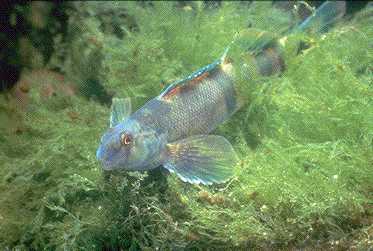Dam Effects on Benthic Fishes
Abstract
The biology, microhabitat use and migratory behaviour of greenside darters (Etheostoma blennioides) was studied at the Mannheim Weir on the Grand River, Ontario during the summer of 1995 and 1996. Officially threatened in Canada, greenside darters reached maturity at age 1 and lived for up to 4 years. They were found in riffle habitats that consisted of cobble and loose boulders, with large mats of Cladophora. This type of unembedded substrate is uncommon in the Grand River watershed. However, local abundance of greenside darters downstream from the Mannheim weir was likely due to high water velocities from weir discharge, freshets and ice scour that help maintain unembedded riffle areas. Trap data indicated that greenside darters temporally partition this habitat with the stonecat (Noturus flavus). Other darter species were not commonly found in areas used by greenside darters. Predators and morphology influenced depth selection and habitat choices of the greenside darter. Denil fishways at the Mannheim weir were rarely used by greenside darters due to prohibitively high water velocities and exclusion by larger fish.
Abstract
Small benthic fish such as darters are frequently collected for stream inventory purposes or to document habitat use, with the intent of releasing the fish unharmed following enumeration. The purpose of this study was to examine the injury and short term mortality (8 d) of greenside darters captured by live wire pot trapping and electrofishing, using two different settings (80Hz, 6ms and 60Hz, 6ms). Two different electrofishing techniques were used, spot electrofishing and sweep electrofishing. Short term mortality was highest for fish collected in live pot traps. Abrasion from the wire traps appeared to remove scales and irritate the skin. By the conclusion of the study, 74% of the fish caught in live pot traps were dead from fungal lesions. Greenside darters captured by all electrofishing methods exhibited low short term mortality (<10%). The only initial mortality, hemorrhaging and spinal damage, occurred for fish collected using 80Hz, 6ms sweep technique, although the short term mortality was still far less than that observed among trapped fish. The spot electrofishing technique resulted in no injury, with either of the settings. Live trapping produces little initial mortality, and thus may be wrongly viewed as a safe alternative for the collection of threatened benthic stream fishes, compared to electrofishing. We suggest that researchers studying small fish in warmwater systems use caution when collecting and handling fish for subsequent release.




